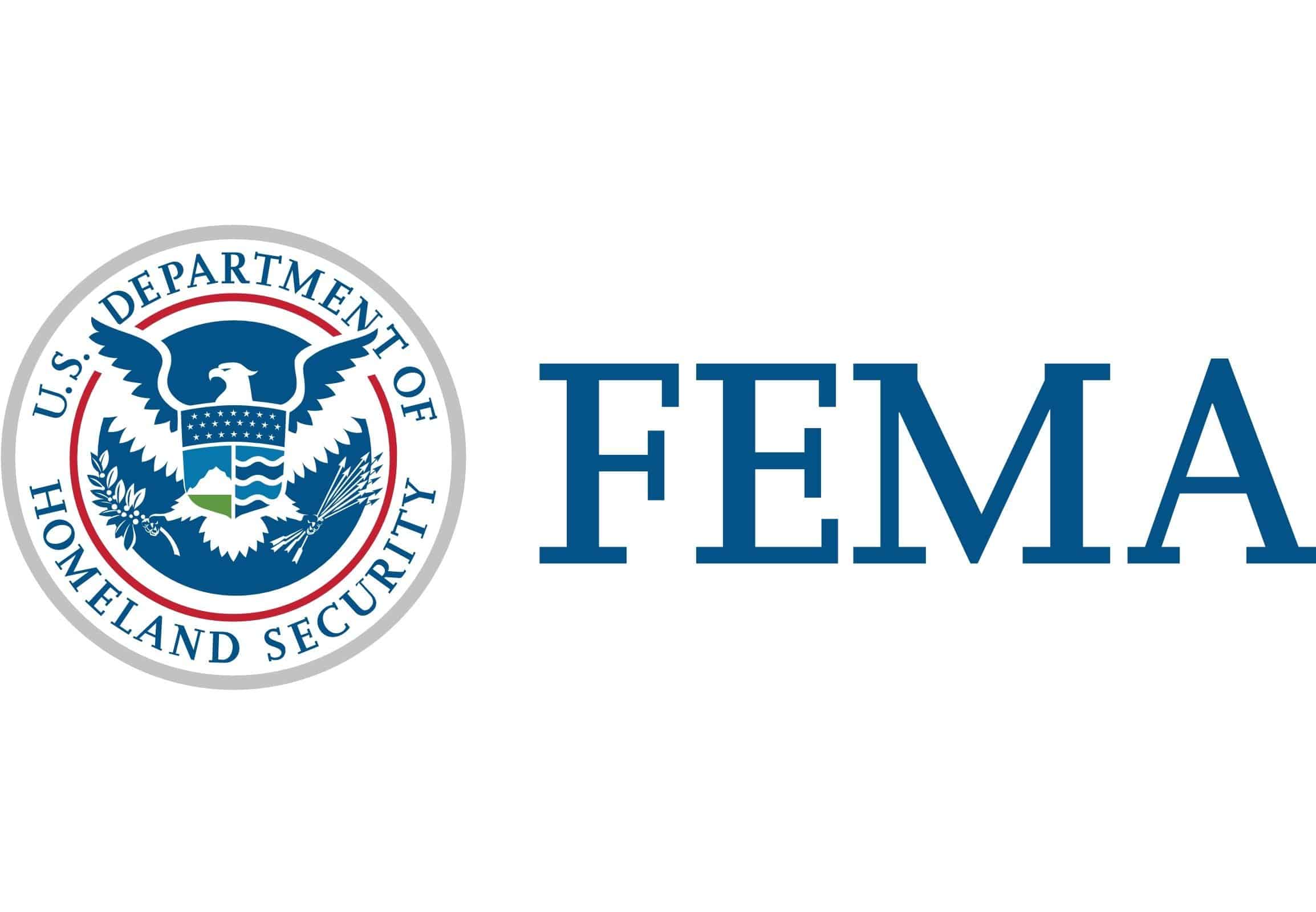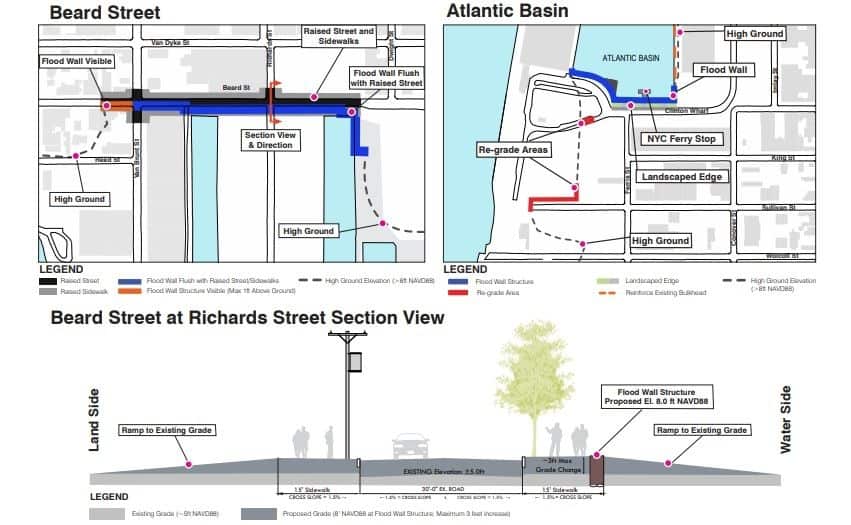Flood protection in Red Hook is still in the works, but don’t hold your breath.
In May 2018, FEMA approved the Red Hook Integrated Flood Protection System Feasibility Study, a joint effort among the Mayor’s Office of Resiliency (MOR), the New York City Economic Development Corporation (EDC), and consultants led by Dewberry. FEMA’s go-ahead marked the end of the first, conceptual phase of the city’s program to protect Red Hook from storm surge, authorizing the subsequent use of $12,649,003 for engineering, design, and permitting. FEMA, which is bankrolling half of the $100 million project alongside the City of New York, set a due date of November 2019 for the plans.
The New York City Department of Design and Construction (DDC) issued a Request for Proposals in January 2019, and in August – only three months before the expected conclusion of the design period – the agency contracted the engineers at Florida-based NV5 for the job. NV5 – which reportedly will, in its arrangement with the DDC, handle three significant city infrastructure projects (including the one in Red Hook) for a total of $12 million in service fees – leads a team of 13 consultancy firms on what the city has now termed the Red Hook Coastal Resiliency project (RHCR), formerly the Red Hook Integrated Flood Protection System (IFPS). The consultants will work alongside seven city agencies – the DDC, the MOR, the Emergency Management Department, the Mayor’s Office of Budget and Management, the Department of Transportation, the Department of Environmental Protection, and the Department of City Planning – as well as the EDC and the Port Authority of New York and New Jersey, with the New York State Division of Homeland Security and Emergency Services (DHSES) interfacing with FEMA on their behalf.
On November 25, 2019, FEMA approved DHSES’s request for a nine-month deadline postponement for the engineering, design, and permitting submission. NV5 has tentatively scheduled the first community outreach meeting for the RHCR design for 6 pm on January 29 at PS 676. Grain Collective, the Brooklyn-based urban design studio, is responsible for “stakeholder engagement,” after providing similar services during the Feasibility Study. On December 17, NV5’s director of engineering Joseph Menzer, alongside city representatives and Sapna Advani of Grain Collective, visited an environmental workshop at the Red Hook Library, organized by Red Hook Houses residents Karen Blondel and Tevina Willis, to publicize the meeting.
NV5 inherited a flood protection concept centered primarily on raising the streets near Erie and Atlantic basins, which, according to Dewberry, would protect Red Hook from flooding during a so-called 10-year storm (i.e., a storm with a probability of occurring once every ten years) – much smaller than Hurricane Sandy. Many Red Hook residents had hoped for an IFPS robust enough to handle a more severe 100-year storm. At the Red Hook Library, Menzer announced that, instead of plowing ahead with engineering based on Dewberry’s ideas, NV5 will reopen RHCR’s conceptual foundations to potential revision, effectively putting Red Hook back near square one.
“Some of you might have been involved in the IFPS study a couple years ago and provided some opinions and some thoughts on what is appropriate for the neighborhood and what is not, but some time has passed, and some of you folks maybe were not involved in that process, so we’re going back out to the community to make sure we’ve heard from everybody,” Menzer explained. Although the Feasibility Study will serve as “the baseline for our proposed work,” Menzer and his engineers will be “looking at that study and looking at alternatives to that study and seeing what the best way to move forward is in terms of Red Hook.”
Menzer also implicitly indicated that DHSES would have to file for at least one more nine-month extension with FEMA during the design process. “Our project is looking at developing contract documents over the next 18 months that the contractor will use in a couple years for an actual construction of flood protection in Red Hook,” he said. The Feasibility Study’s targeted completion date for the construction was 2021, but Menzer predicted that Red Hook’s IFPS would arrive “three to five years down the road.”
Local architect Gita Nandan of the advocacy group Resilient Red Hook supports NV5’s decision to return to the drawing board for the IFPS concept. “Resilient Red Hook finds the current proposal to be seriously lacking in vision, falling way short of the needs of our community in the next 25 to 50 to 100 years. We are looking forward to more engagement to understand the direction of the construction and to provide and push for the greatest protection possible,” she stated.










